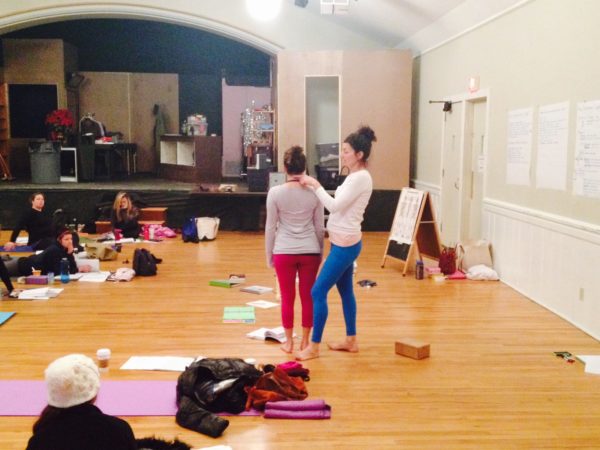
I recently was asked to help a friend and yoga student of mine pick a teacher training program. While I’ve written about this before and in looking at my article from 2011 (wow!) I still stand behind my suggestions, it did give me a reason to update my thoughts on this.
I realize many of you reading this are already teachers and have completed your 200 hour program. But if you’re not, the good news is you have a LOT of options to choose from in terms of what training to attend. But, by the same token, that’s the bad news too because there are so many options from which to choose, it’s actually a lot more confusing for people now.
I believe the best place to start is to ask yourself this question:Â
Do you want to teach yoga?Â
Because if you want to teach versus attending a teacher training as a life experience, than your decision as to what training to attend may be very different. For instance, if I want to invest in training to expand my practice, meet new people and challenge myself both physically and mentally, I might be less concerned about who is doing the training and the agenda as well as possible future business connections than if I’m attending a training because I want to teach yoga and perhaps I want to work with/for the person hosting the training.
For this exercise, let’s proceed with the idea that you are investing time and money into a 200 hour training because you do want to teach yoga.
The next question I’d have you ask yourself is this:
Where do I practice now and what teacher do I most admire/enjoy/learn from?
The reason I like to have you start here is because in my mind, it’s always better to invest in what you know you like over taking a risk with your hard earned time and well deserved time off with someone with whom you have no experience. If for you, you have all the time and money in the world, then go for it. If not, then I’d urge you to pause before you spend money on a teacher training with someone you’ve never met.
Now, having said that, I can say that if you have done any number of online classes with a teacher, have talked to people who have attended his or her trainings, read any books, articles or blog posts they’ve written and it does all seem consistent with what you like and a style you’d like to teach, then it makes sense to proceed. The point is this: Invest in what you know you like versus taking a chance because someone is popular or other people you know like them.
The next question I’d have you answer is this:
How much time off can I afford/money can I invest in this training?
I’d say a good rule of thumb is that any 200 hour training will cost you about $3000. That doesn’t include any travel, food or lodging. This brings up my next point which is the aspect of training that has to do with the format of the training. There are many studios that now offer home based/studio based 200 hour training versus off site/remote/”travel to a location” type trainings. If you have concerns about getting time off from your job, the cost and impact of traveling to your schedule and other factors (child care, pet care, time off from work, etc) then a locally based training might be just what you need.
There are other things to consider as well, things like: is the training one that is registered with Yoga Alliance; have you talked to anyone that has attended the training to get their feedback; do you have even a basic plan of action with regard to how you’ll use this investment when you return?
This last piece is often not considered but can help you start to map out a strategy. This is again why it’s helpful to train with someone you know and with someone who knows you because often in the yoga industry, opportunities are shared through personal contacts.
If you’d like to look at my earlier article on this subject, you can look at that here.
And, if you’d like to read up on more about becoming a yoga teacher, investing in training, learning about the industry, building a brand and a business, check out my book on the subject called, “Stretched: Build Your Yoga Business, Grow Your Teaching Techniques,” on Amazon. You can read the reviews from other teachers who’ve read the book.
As always if you have any questions, please send me an email.
Thanks for reading!
